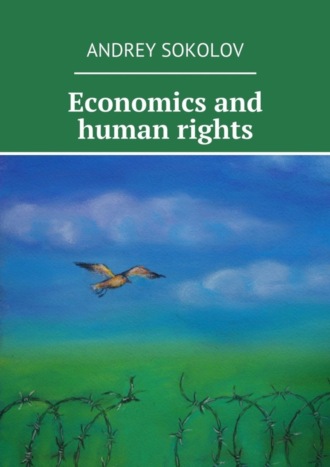
Полная версия
Economics and human rights
Italy
In Italy, there are no brothels, they are prohibited by a special law from 1958. But in private, sex services are not prohibited. Punish only pimps and traffickers. Clients who did not pay prostitutes are treated as rapists. In 2010, in Italy, 70,000 prostitutes from 60 countries worked. In December 2002, the Italian authorities passed a law permitting prostitution in private homes. And street prostitutes face fine and arrest. (28)
In the Middle Ages in Italy, some cities tried to expel prostitutes (Bologna in 1259, Venice in 1266 and 1314, Modena in 1326), but unsuccessfully, for demand generates a proposal. Florence in 1287 ordered that within a radius of 0.5 km from the city there were no brothels, but already in 1325 again began to register urban prostitutes and the allocation for them of separate areas. In 1355 prostitutes were forbidden to appear in the city on all days, except Saturday and Monday. And according to the decree of 1384, prostitutes were ordered to wear bells on the head, gloves and shoes with high heels.
Since 1401, Naples began to impose prostitutes tax.
On April 30, 1403 in Florence, the Onesty police were created, which controlled prostitution, based on the writings of Augustine and Thomas Aquinas, who considered prostitution an indispensable institution for satisfying the sexual desires of men and an alternative to homosexuality. In the latter part, their views coincided with the position of Minister of the Interior of Nazi Germany Himmler, who was also a homophobe and saw in prostitution salvation from homosexuality.
Since 1823, the municipality of Palermo began issuing licenses to open brothels in the city. In 1841, at the request of the King of Naples, a compulsory medical examination for prostitutes was introduced. Likewise, Bologna also entered, having established even a special hospital for prostitutes.
The first law on prostitution in the united Italy was adopted on February 15, 1860. The number of registered prostitutes reached a peak in 1881 – 10,422 girls; in 1948 there were 4,000 of them, and in 1958, 2,560.
In 1923 Mussolini ordered all prostitutes to wear special passes, in which the results of their examination for venereal diseases were noted.
During the occupation of Ethiopia, special houses of tolerance for the needs of the army were created in Addis Ababa. Separate brothels were established for Italians, separate brothels for local residents.
Colombia
In Colombia, prostitution and brothels are legal. The activities of prostitutes are limited to “zones of tolerance” – districts specially designated for legal activities.
Latvia
Prostitution in Latvia has been legal since 1998. Prostitutes, under the law of 2017, must be at least 25 years old, have a health certificate (health card issued by a venereologist) and can provide sexual services only in their own or removable living quarters. A client who uses the services of a minor prostitute risks a fine of 350 to 700 euros (29, 30)
The number of prostitutes in 2005 was estimated at between 10 and 30 thousand. The legalization of prostitution in Latvia has led to a significant increase in the flow of tourists. And here it is important to understand that tourists at the same time use not only the services of girls, but also rent housing, pay for the hotel, for travel, for food. Those. the legalization of prostitution had a beneficial effect on the Latvian economy and the development of the tourism industry.
Netherlands
Prostitution in the Netherlands is legal, and near the red light district of Oude Kerk, in fact, in the center of Amsterdam, stands the statue Belle, on the pedestal of which it says: “Respect sex workers of the world.”
According to official figures, in 2000, between 20,000 and 25,000 prostitutes worked in the Netherlands. Including:
• 32% of Dutch citizens,
• 25% of visitors from Eastern Europe and the European Union,
• 22% of newcomers from Latin America,
• 21% of newcomers from Africa and Asia.
In the Netherlands every year, from 1,000 to 1,700 victims of sexual slavery are registered. In 2008, 763 women from Hungary were identified, 60% of whom were forcibly involved in prostitution. Is it the fault of the legalization of prostitution, is it the fault of legislators? Hardly. If prostitution were illegal, then the percentage of forced exploitation would be much higher. But of course there are questions to the work of the police.
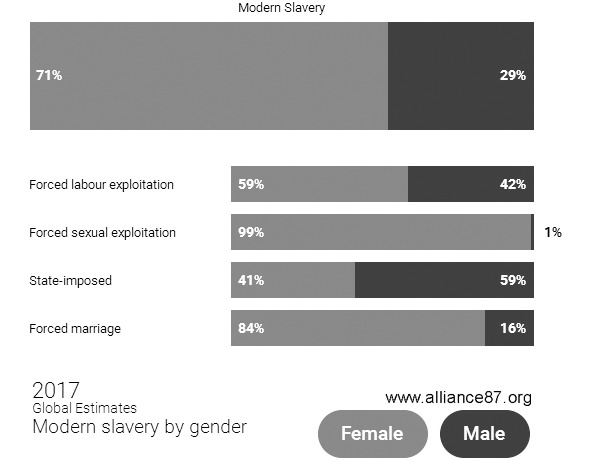
Modern s
The argument that the legalization of prostitution leads to trafficking and forced exploitation does not stand up to criticism. First, these are shortcomings in police work, and secondly, there are many other ways of violent exploitation and modern slavery. For example, the creation of clandestine shops, where they are held in slavery and forced to slave labor not prostitutes, but seamstresses or people of other specialties. So the profession and legalization of prostitution is not to do with it.
Do not think that slavery and prostitution are equivalent concepts. Slavery, human trafficking, the concept is much broader, and therefore is not the cause of prostitution and lead to the prohibition of prostitution. The causes of trafficking lie in a completely different plane and the ban on prostitution is more likely to promote the slave trade than the legalization of sex workers’ work.
Let’s look at the numbers. According to the Global Estimates of Modern Slavery study prepared by the Walk Free Foundation in conjunction with other organizations in 2017, 40 million people worldwide are in slavery, earning up to $ 32 billion annually. Of these 40 million, only 5 million slaves (99% of the cases are women) are involved in the sex industry. (140, 141)
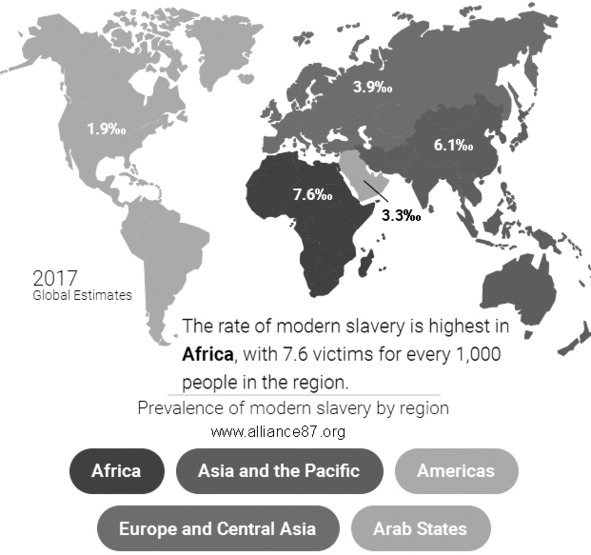
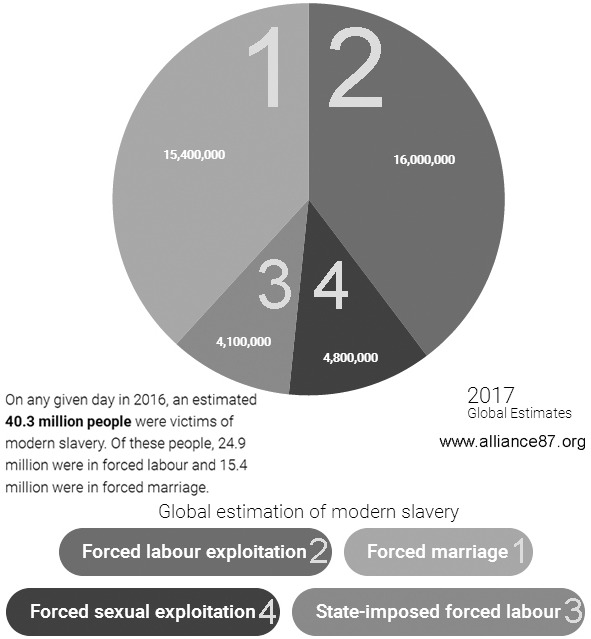
But apart from sex slavery there is still a huge layer of labor slavery, child slavery.
According to the Walk Free Foundation, Russia ranks 7th in the world in terms of the total number of slaves – over 1 million. The majority are labor. (142, 143)
In February 1985, the first World Congress of Prostitutes was held in Amsterdam. The Congress was held on the initiative of the head of the American organization COYOTE Margarita James and her like-minded Gale Featherson. At the congress, the International Committee for the Rights of Prostitutes was established, and the Charter of Rights of Prostitutes around the world was adopted. The public organization “Red thread” was established, which set itself the goal to achieve the legalization of prostitution. This organization, as well as the de Graaf Foundation and the Fund against Trafficking in Women, have become the main lobbyists for the legalization of prostitution. In January 1988, the Netherlands government recognized prostitution as a profession. On October 1, 2000, the Netherlands allowed the opening of brothels. Since then, the Oude Kerk quarter in Amsterdam is not only the place of sale of sex services, but also a tourist attraction.
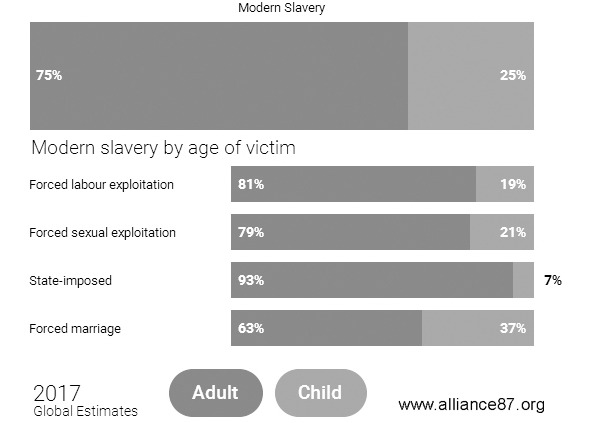
In Holland, women and men who earn a living with their own body have equal rights with all other working citizens. They pay taxes, and in return receive the right to health insurance, funded pensions and vacation. Prostitutes should have a medical certificate, the age of the prostitute must be at least 18 years old, the age limit for clients is 16 years.
New Zealand
New Zealand legalized prostitution more than 10 years ago. The law protects both prostitutes and their clients. Even pimping in New Zealand is legal.
Costa Rica
In Costa Rica, prostitution is legal and protected by law. Tolerance houses and individual activities are permitted. Prostitutes should have a medical book with them and be over 18 years of age.
Singapore
Prostitution in Singapore is allowed from the age of 18. There are special quarters of red lanterns. Prostitutes undergo regular physical examinations. (32)
Turkey
Women in Turkey work as prostitutes not only at will, but can also serve their sentence, as in prison. (29)
Only women can be engaged in prostitution. Men are forbidden.
Matilda Manukyan (1914 – 2001), owner of a network of brothels in Turkey, was the largest taxpayer in Istanbul in the 1990s. (4)
Finland
Prostitution in Finland is not officially banned, but there is a ban on brothels and pimping. Also, the purchase of sexual services from victims of trafficking in persons, prostitutes under the control of pimps and persons under 18 years of age is punishable. Those who pay a prostitute, knowing that she was forced to have sex, faces four months in prison or a fine. Buying and selling in public places is punishable by a fine.
According to data for 2015 in Helsinki on the streets worked prostitutes from Africa, Russia, Estonia and Romania. Basically, according to the Finnish police, 90% of sex services are advertised on the Internet and sold in private premises.
The sober approach of Finnish policemen is respected. The Finnish police are combating trafficking in human beings and forcing women to prostitution. According to the representative of the Finnish Ministry of Justice, Janne Kanerva, the most obvious sign that trafficking occurs is the presence of an intermediary or the payment of “services” to a third party.
According to the THL Health and Welfare Office’s research for 2013, 95% of Finnish prostitutes use condoms, and 60% have been tested for HIV during the last half-year. Half of sex workers are vaccinated against hepatitis B. It is noteworthy that the respondents of this study answered questions in Finnish in 32% of cases, in Russian in 34%, and in Thai in 30%.
France
Prostitution is legal, but since 1946, outlaws are brothels, pimps, street pestering and prostitution among minors. A prostitute who spoke to a man on the street faces a fine of up to $ 1,500, and a pimp can receive up to 2 years’ imprisonment. (28)
Czech Republic
Occupation of prostitution in the Czech Republic is not prosecuted by law. But the organization of brothels is considered a crime.
Chile
In Chile, prostitution is legal. Since 2009, laws have been enacted in the country that provide for the social and physical protection of prostitutes. Prostitutes were even allowed to publish a textbook, in order to teach police to respect the rights of female workers in this profession. (28)
Switzerland
Prostitution in Switzerland has been legal since 1942. A sex worker must be over 18 years of age, and a brothel must undergo a licensing procedure. In 2010, Zurich opened a special public house for gays.
Ecuador
In Ecuador, prostitution is legal. Public houses are licensed. One of the motives for the legalization of prostitution and licensing of brothels was not even budget revenues or any lobbying, but the fight against prostitution of minors, crime and containing sex slaves. It was from the women who were forcibly involved in prostitution that the contingent of underground brothels at the end of the twentieth century consisted. Legalization helped solve this criminal problem.
Japan
Since 1956, prostitution has been banned. But, of course, there is. The turnover of this services market is more than 2.3 trillion yen or 0.4—0.5% of GDP. However, in Japan, “sex industry” and “prostitution” are different things. Prostitution, according to Japanese laws, is vaginal sex for money. Therefore, there are absolutely legal, for example, sex clubs offering oral sex. These services are regulated by the 1948 law “On Enterprises Affecting Public Morality.” (4)
Occupations of prostitution are also legal in South Africa, Canada, most of Mexico, in Australia, as well as in countries of southeast Asia (with the exception of the Philippines and China). In the US, prostitution is allowed only in a few counties in the state of Nevada; in fact – in Las Vegas (since 1971). In Sweden, Norway and Iceland, the offense is committed by a client, not a prostitute. (36, 37)
One can debate for a long time the consequences of legalizing prostitution. It is possible to discuss just as long the consequences of the ban. However, these discussions are not important. It is important whether human rights are respected in the legalization of prostitution. Or they are observed with the prohibition. It is important to observe human rights, not arguments, why these rights should not be respected.
The point is not whether the legalization of prostitution or anything else is good or bad, but whether the right to engage in prostitution, the right to use this service to the right of a person to work and rest. Does the prohibition on prostitution limit the right to life and health for a prostitute and her client. And if the answer is positive, then prostitution should be legalized.
Drugs. The right to life also means the right to die. Or “The state! Be honest!”
Another nutrient environment for crime, another hole in the budget, another waste, instead of income, another failure to respect the human rights to life and health – drugs.
In this chapter we will look at some methods of combating drugs and criminal drug trafficking. These measures, on the one hand, make it possible to fully observe human rights, and on the other hand, reduce the number of drug addicts and illegal drug trafficking, prevent the emergence of new heavy drugs, and deprive drug revenue banks of the income and market.
These measures, despite the softness and unconventionality, have made it possible to achieve what could not be achieved with harsh police methods for many years. Namely: reduce the number of drug addicts, increase the number of requests for medical help to narcologists, increase the number of refusals from drugs, reduce the number of “first-time users”, reduce deaths from overdose, reduce the incidence of AIDS, hepatitis, tuberculosis.
We will analyze this by examples of countries that have partially or fully legalized drugs or have used such a method of struggle as decriminalization of drug use.
It is important to understand that drugs are not just heroin or marijuana, but also tobacco and alcohol freely sold in every supermarket. These drugs are legalized almost everywhere. The rest – almost everywhere outside the law for many years. And for many years the ban does not bring any economic benefit to countries and does not reduce the number of drug addicts or drug trafficking. This is called Sisyphean labor.
And this despite the fact that illegal marijuana or LSD have less public harm than alcohol. Addiction, addiction, to ecstasy, hallucinogens or marijuana, develops to a much lesser degree than to tobacco or alcohol.
The turnover of drugs is, on the one hand, a huge expenditure of the budget for catching drug addicts and dealers, and on the other hand – an excellent ground for criminals. The consequences of the ban are well known and have long been tested. The ban is income for crime and corruption.
The Global Commission on Narcotic Policy in June 2011 recommended that countries “experiment with the legal regulation of certain types of drugs that are permissible for possible legalization, in order to combat drug trafficking.”
What will happen if drugs are legalized?
Then they just like cigarettes or alcohol will start to bring income to the country’s budget, and not into the pocket of the mafia. The police will not deal with catching drug addicts with taxpayer money, but with protecting life and property of taxpayers.
Is it possible to legalize, for example, heroin?
Heroin is, in principle, a pretty quick death. If a person has the right to life, then he has the right to interrupt her at will. Otherwise, all hunting rifles should be banned – they can be shot, all high-rise buildings – they can jump off and commit suicide, all trains can be thrown under them. And, of course, you need to prohibit gas stoves and the sale of ropes in stores.
Will everyone rush to buy heroin if it can be sold legally? Of course not. Especially if lighter forms of drugs are available. Will everyone rush to sell heroin? Also no. Because they sell only what they buy. On what there is a demand.
Not so many people buy the permitted drugs – alcohol and tobacco. And strong alcohol buys even fewer people. So why should people rush to buy or sell a legalized heroin?
But to advertise drugs, including alcohol and tobacco, of course not worth it. Here the ban is completely justified.
As for soft drugs, drugs such as alcohol and nicotine have been legalized, then the ban on the legalization of marijuana, LSD or ecstasy looks rather strange and false.
We will analyze the statistics of prohibitions and permits for drugs in different countries, because, as in the case of prostitution, there are already examples of legalization or decriminalization of drugs.
From the Universal Declaration of Human Rights
Article 3.
Everyone has the right to life, liberty and security of person.
Article 5.
No one shall be subjected to torture or to cruel, inhuman or degrading treatment or punishment.
Article 7.
All are equal before the law and are entitled without any discrimination to equal protection of the law. All are entitled to equal protection against any discrimination in violation of this Declaration and against any incitement to such discrimination.
Article 12.
No one shall be subjected to arbitrary interference with his privacy, family, home or correspondence, nor to attacks upon his honour and reputation. Everyone has the right to the protection of the law against such interference or attacks.
Article 17.
(1) Everyone has the right to own property alone as well as in association with others.
(2) No one shall be arbitrarily deprived of his property.
Article 18.
Everyone has the right to freedom of thought, conscience and religion; this right includes freedom to change his religion or belief, and freedom, either alone or in community with others and in public or private, to manifest his religion or belief in teaching, practice, worship and observance.
Article 19.
Everyone has the right to freedom of opinion and expression; this right includes freedom to hold opinions without interference and to seek, receive and impart information and ideas through any media and regardless of frontiers.
Australia
In Australia, as in the United States, there is a difference in legislation for different territories. In the capital, you can freely store 25 g of marijuana (excess is punishable by a fine of $ 100), and in Queensland for a couple of cigarettes you can get 15 years in prison. (49) In Western Australia, storage and private use of marijuana are allowed (up to 2 plants, for excess – fine). In South Australia, New South Wales and Tasmania, the storage of hash is not considered a major offense.
Different and punishments. In Western Australia, people are sent for counseling to psychologists. In New South Wales, Queensland, Victoria and Tasmania, the storage and use of cannabis is considered a criminal offense, but more often the perpetrators are sent not to prison but to study or treatment. (51)
Since 2016, medical use of marijuana is allowed in Australia everywhere. (50)
Austria
The Austrian Law on Narcotic Substances of 1998 distinguishes drug producers and those who use them. The punishment depends on which group the violator belongs to. Drug use is decriminalized, that is not a criminal offense. However, possession for personal purposes is punishable by a fine or arrest for six months. It is permitted to use marijuana for medical or scientific purposes. (52, 53)
Argentina
In 2009, marijuana was decriminalized in minimal doses. (54)
Belgium
In 2003, the Belgian Parliament passed a law on the legalization of weak drugs. (55) Smoking marijuana, as well as drinking alcohol – you can. However, if as a result a person breaks the public order, breaking the law in the altered state of consciousness will automatically add to the hooliganism a more serious narcotic article.
It is prohibited to smoke in public places, store and purchase more than 3g of marijuana, but you can grow one plant. Also, the use of cannabis (cannabis) for medical purposes is permitted.
Despite the ban on smoking in public places, marijuana can be smoked while driving a car. (56)
Brazil
In Brazil, marijuana is illegal, but for its storage (as well as for the storage of any drugs) is not threatened with prison. In 2006, the country adopted a law that introduced alternative types of punishment for drug addicts. Drug traffickers and drug addicts are subjected to fundamentally different punishments. (57)
United Kingdom
Since 2002, the storage of small quantities of hemp and its derivatives is not a crime. But the police can arrest those who use marijuana, for example, in the presence of children. (58) In the same year, the UK authorities transferred marijuana from Class B to Class C, which includes, for example, steroids.
June 17, 2016. two leading British public health organizations, the Royal Society for Health and the Public Health Council, called for the permission to store and use for personal use all types of drugs. Experts of the organizations believe that the British state policy on drugs has failed. The report, entitled “A New Approach to Drugs”, argues that criminal prosecution of drug addicts is ineffective and the threat of punishment only increases the chances of the addict dying of an overdose and is an obstacle for the treatment of drug addicts for medical care. The authors of the report call for the adoption of the Portuguese system in Britain, when people who are caught using drugs are offered help, and not punished. President of the Royal Society for the Protection of Health Shirley Kramer said that the time has come for a new approach, and we must recognize that drug use is a health problem, not a criminal law, and that those who use drugs illegally need treatment and support, and not punishment.
Venezuela
Since 1993, in Venezuela, for those who have been caught with two grams of cocaine or 20 grams of cannabis, the prison has been replaced by “measures of social impact”. Such people arrested for storing drugs for personal use are sent for treatment. (59)
Germany
The medical use of cannabis is legal since 2007. As of April 2016, hemp received 647 patients. Keeping marijuana can be both legal and not, depending on the amount of grass and local laws. Most laws of the various “lands” of Germany allow storing up to 5g of marijuana.
The German police do not pursue citizens for keeping a “small amount” for personal consumption. But can delay for smoking marijuana in public places, at school or in the presence of children. (60, 61)
Denmark
Since 2011, the Danish Medical Agency has authorized the use of three varieties of medical cannabis for a patient with cancer or multiple sclerosis. (62)
Israel
Since 1994, Israel has been allowed to use marijuana to people who suffer from cancer, Parkinson’s disease, multiple sclerosis, Crohn’s disease, chronic pain, post-traumatic stress disorder. (63)
Spain
Since 1992, in Spain, the use of marijuana is an administrative crime. For storage of “grass” or smoking on the street a fine of up to 300 euros is possible. Storing more than 40 g of cannabis, spreading and growing marijuana is a criminal offense (from 1 to 3 years). (64)
Smoking cannabis in public places is prohibited, but there are specialized clubs of marijuana lovers, which in Spain are about 500. (65)
Cambodia
In Cambodia, marijuana is illegal. Application for medical purposes or in cooking is not prosecuted. In local restaurants Happy Pizza with cannabis is openly sold, and in the markets – “cheerful” confectionery. (66)
Canada
Since 2001, smoking marijuana is permitted for medical purposes. The grass can be legally grown if there is a doctor’s order and a special permit that is issued to patients with various forms of cancer, AIDS, arthritis and multiple sclerosis. (67) In Canadian Vancouver medical marijuana is prescribed to people who complain of a bad dream. In mid-2015, the city had about 80 shops selling cannabis. (68) By 2018 full legalization of marijuana is planned. (1, 69)




